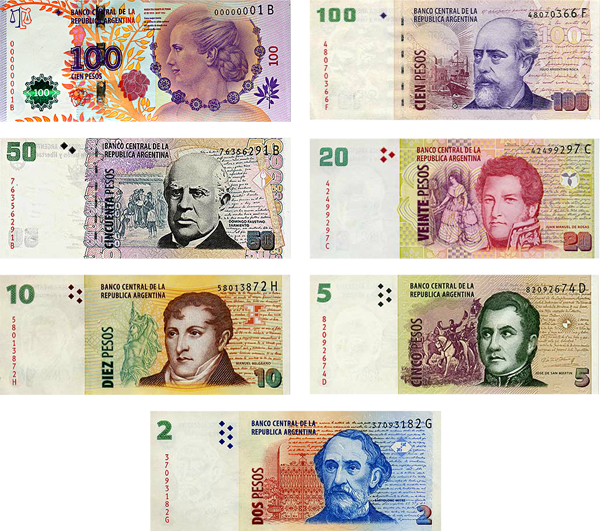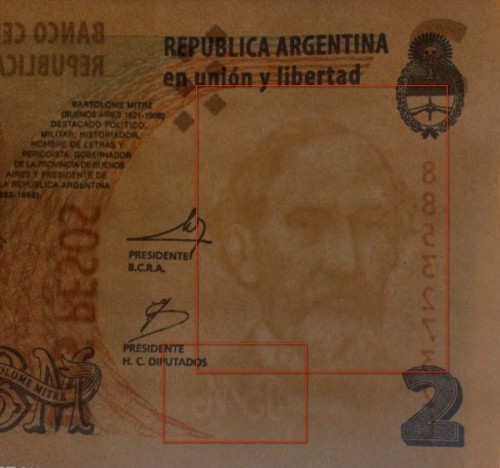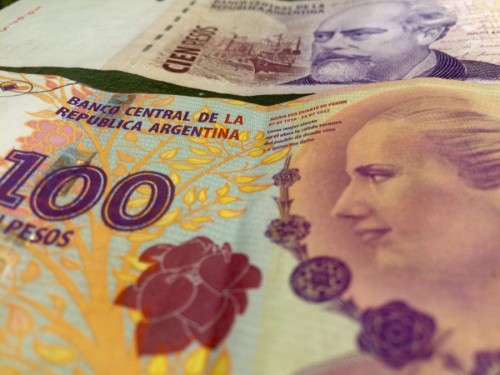Please note that this article was originally written in 2014. In the last few years, Argentina has gone through an economic turmoil and while the dolar blue still exists, the exchange rate is drastically different so your USD will stretch even further.
With the intense inflation in Argentina, and instability of the Argentine Peso from crash in 2001, it has been an expensive country for those living there and for anyone visiting. This has caused many Argentinians to look for ways to keep their money from losing value whether it’s purchasing a car, a house, a computer, or US dollars. Anything is better than keeping their earnings in the bank. Because of this, there are many people willing to sell their pesos for dollars on the “black market” or the Blue Dollar (Dolar Blue) rate.
Is the Blue Dollar Illegal?
While the exchange is technically on the black market, it’s not as sketchy as it sounds. The police and government “allow” the Blue Dollar as long as they’re getting a cut from the profit and anyone with some extra cash lying around is most likely willing to buy your dollars. Even the morning news broadcasts the daily rates which includes the Blue Dollar rate. The Blue Dollar rate fluctuates and is better than the official rate for foreigners. Currently (November 2014) the official rate is $8.45 ARS to $1 USD. Depending on the date and time the Blue Dollar rate may change, but it’s likely going to be better (for those selling dollars) than whatever the official rate is. In September 2014, the Blue Dollar rate was at $17! For every $1USD you exchanged, you would have received $17 ARS Pesos. For every $100 USD that would be $1700 pesos.
Where to Exchange Dollars at the Blue Dollar Rate
When I arrived in Buenos Aires, the peso was at $14.75 per $1 USD, then a week later it dropped to about $13.00 Now, mid October we’re at less than $13, which is still ideal over the 8.75 exchange. The problem is that you cannot go into an official exchange office and exchange money at the Blue Dollar rate. You need to find a place (they call them “caves” or clave`) that will sell their Argentine pesos for your American dollars. The issue is that you will need to find a place that will not scam or rip you off. These can be inside of jewelry stores, antique shops, hotels or anywhere else that is likely managed by the owners.
With all this said, don’t even consider coming to Argentina without dollars. There is no way to withdraw dollars from the ATMs here.
Common Scams to Watch Out for When Exchanging Money
Common scams to look out for include giving you the wrong currency, counterfeit pesos, or even a really bad Blue Dollar exchange rate. It’s easy to fall into one of these tricks, but it’s just as easy to avoid or prevent them from happening to you.
First off, you need to know what Argentine pesos looks like.
If you are in Buenos Aires, you can go to this website and see where you can go to exchange money. The shops listed on the GPS map on the site are ones that have been confirmed by users to be legit Blue Dollar exchangers. However, that absolutely does not mean you should let your guard down.
If you are in Mendoza, you can go to the shopping mall on San Martin street, where there will be people saying “cambio, cambio” to you. They are representing someone who likely owns a shop in the mall. Find out what rate they’re offering and say you want to go to their shop in the mall to do the transaction.
Here is how to prevent getting scammed or ripped off when exchanging money at the Blue Dollar rate.
Number One: Confirm the rate you want to exchange your dollars. Before going out to exchange money, check the Blue Dollar rate for the day so if they low ball you thinking you have no idea what the day’s rate is, you know to either move on or tell them you know what the rate is and see if they’ll reconsider.
Number Two: Check each bill under light and look for the watermarks on the peso. Pesos have two watermarks, initials and a small portrait of whose ever face in on the peso. A fake peso will either be missing the watermarks OR will be distorted and fuzzy. It should be a perfect watermark stamp.
Number Three: Don’t hand over your dollars until they bring you the pesos. One trick is that they will accept your dollars, take it to the back room, switch it out for counterfeit US dollars and tell you that your money is no good.
Number Four: They give you a significantly better rate than every single other person you’ve ask without much effort on your end can be a sign that the money is counterfeit.
Number Five: Count your bills! The highest peso bill is a 100 peso and right now it’s only worth about $6 USD so counting out all the pesos may take some time, but regardless, count it!
Number Six: Feel the money. The words at the top of a peso that read “Banco Central e La Republica Argentina” are slight embossed you can feel that it’s slighty more textured than the rest of the paper.
If you don’t feel confident exchanging money, you should exchange only $100 USD and get familiar with the money so that the next time you need to exchange money, you will be more familiar with Argentine notes.
If you enjoyed this post, why don’t you follow Adrift Anywhere on Facebook or subscribe to get updates on budgeting tips, travel advice and tips!




These are great tips, always need to be conscious about money exchange. We usually have to watch out in Bali as they sometimes have slits in the table so some can roll down after you hand it back to them when counting the money, trick is just to hang onto the money once you have agreed on the exchange.